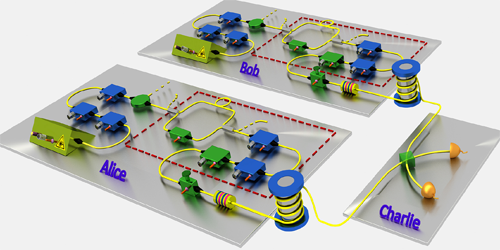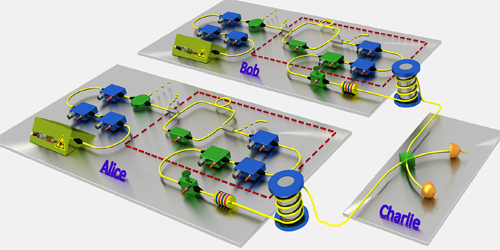Quantum Cryptography Goes a Long Way
Encryption is critical in many aspects of modern life, such as the millions of credit card transactions that occur every day. However, perfectly secure communication can only be achieved using the strong correlations, or entanglement, between quantum objects. Now, Jian-Wei Pan at the University of Science and Technology of China and his colleagues have experimentally shown that a secure quantum protocol known as measurement-device-independent quantum key distribution (MDIQKD) can be implemented over a distance of 404 km. The result breaks the previous MDIQKD record by over a factor of 2 and paves the way for secure quantum communications between distant cities.
MDIQKD—a protocol proposed in 2012—functions even when it uses photon detectors that are not ideal and have, for example, low detection efficiencies. It can also overcome security loopholes of quantum communication schemes by sending out decoy pulses of light to detect eavesdropping attacks. Pan and his team sent pulses of infrared photons through optical fibers with lengths between 102 and 404 km and optimized the MDIQKD scheme by tuning several parameters, such as the average number of photons per pulse. The protocol was found to be secure up to the longest distance. For each length, the researchers also determined the maximum speed by which cryptographic keys could be securely distributed. Compared with earlier experiments, they demonstrated a 500-fold increase in speed, reaching a key-distribution rate that would be sufficient to ensure encrypted voice transmission by telephone.
This research is published in Physical Review Letters.
–Katherine Kornei
Katherine Kornei is a freelance writer based in Portland, Oregon





